
The Ulvophyceae or ulvophytes are a class of green algae, distinguished mainly on the basis of ultrastructural morphology, life cycle and molecular phylogenetic data. The sea lettuce, Ulva, belongs here. Other well-known members include Caulerpa, Codium, Acetabularia, Cladophora, Trentepohlia and Monostroma.
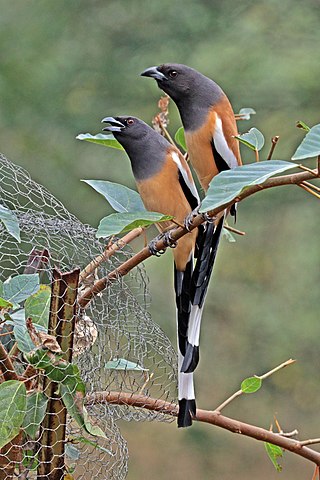
The rufous treepie is a treepie, native to the Indian Subcontinent and adjoining parts of Southeast Asia. It is a member of the crow family, Corvidae. It is long tailed and has loud musical calls making it very conspicuous. It is found commonly in open scrub, agricultural areas, forests as well as urban gardens. Like other corvids it is very adaptable, omnivorous and opportunistic in feeding.
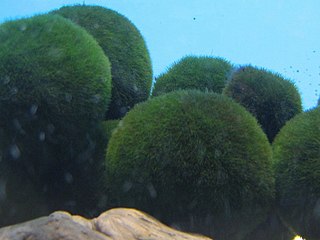
Marimo is a rare growth form of Aegagropila linnaei in which the algae grow into large green balls with a velvety appearance.
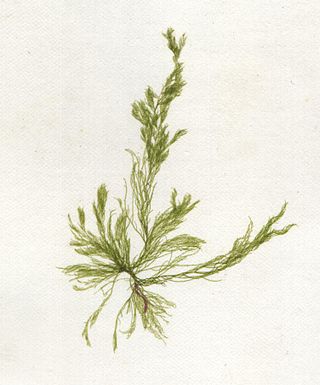
Cladophora is a genus of reticulated filamentous Ulvophyceae.

William Henry Harvey, FRS FLS was an Irish botanist and phycologist who specialised in algae.

The Aliwal Shoal is a rocky reef which is the remains of an ancient sand dune approximately 5 kilometres (3.1 mi) off the coast of KwaZulu-Natal, South Africa. The reef is inhabited by many kinds of hard and soft corals and other marine invertebrates, and a variety of tropical and subtropical fish species. Aliwal Shoal was named after the near-sinking in 1849 of the three-masted vessel Aliwal, captained by James Anderson. There are two wrecks near the reef that are popular recreational dive sites. The Norwegian bulk carrier MV Produce sank in 1974, and SS Nebo sank in 1884. Aliwal Shoal has diverse marine life, including large predators, and is popular as a recreational scuba diving destination. The Shoal is known especially for its abundance of Grey nurse sharks between July and November when the sharks congregate there to mate.

In fishkeeping, a refugium is an appendage to a marine, brackish, or freshwater fish tank that shares the same water supply. It is a separate sump, connected to the main show tank. It is a "refugium" in the sense that it permits organisms to be maintained that would not survive in the main system, whether food animals, anaerobic denitrifying bacteria, or photosynthesizers. For some applications water flow is limited in order to protect plants or animals that require slow flow. The refugium light cycle can be operated opposite to the main tank, in order to keep total system pH more stable (due to the uptake of acid-forming CO2 by photosynthesis occurring in the refugium during its "daylight" hours). One volume guideline for a refugium is 1:10 main tank volume.

The Wahai tree frog is a species of frog in the subfamily Pelodryadinae, endemic to Indonesia and known from the Vogelkop Peninsula in the north-western New Guinea, and from the Seram Island, one of the Maluku Islands. Little is known about this lowland species that has not been collected after it was described in 1878.
Apjohnia is a genus of green algae in the family Siphonocladaceae.
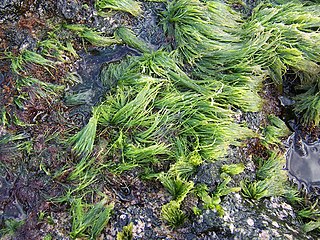
Chaetomorpha is a genus of green algae in the family Cladophoraceae. Members of this genus may be referred to by the common name sea emerald.

Red algae, or Rhodophyta, are one of the oldest groups of eukaryotic algae. The Rhodophyta comprises one of the largest phyla of algae, containing over 7,000 currently recognized species with taxonomic revisions ongoing. The majority of species (6,793) are found in the Florideophyceae (class), and mostly consist of multicellular, marine algae, including many notable seaweeds. Red algae are abundant in marine habitats but relatively rare in freshwaters. Approximately 5% of red algae species occur in freshwater environments, with greater concentrations found in warmer areas. Except for two coastal cave dwelling species in the asexual class Cyanidiophyceae, there are no terrestrial species, which may be due to an evolutionary bottleneck in which the last common ancestor lost about 25% of its core genes and much of its evolutionary plasticity.
Characium marinum is a species of green algae (Chlorophyta).

Anne Elizabeth Ball (1808–1872) was an Irish botanist, amateur algologist, and botanical illustrator. Born in Cobh 1808, Ball was a sister of naturalist Robert Ball and zoologist Mary Ball (1812–1898). The siblings became interested in natural history through the passion of their father, Bob Stawell Ball.
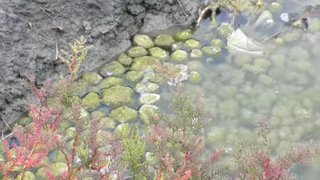
Cladophora socialis is a species of green algae.

Felix Bast, born as V. M. Sreejith Nambissan, is an Indian phycologist, author, and public educator based at the Central University of Punjab. He is the member of the high-profile advisory council of International Science Council, Paris, and has discovered seven new species of plants from India and Antarctica.
Eva AnnMari Jansson née Olausson (1934–2007) was a Swedish scientist who specialized in systems ecology. She is remembered for studying the interaction between ecology and economics, contributing to early research into ecological economics. Together with her husband Bengt-Owe Jansson, she undertook research at the Askö Laboratory into the fauna of the Baltic Sea, especially in the Cladophora Belt. Increasingly, under the influence of the American researcher Howard T. Odum, she turned her attention to ecology, examining the interaction between different species and the environment. In 1988, she helped to establish the International Society for Ecological Economics, editing its journal Ecological Economics from 1989 and hosting the society's meeting in Stockholm in 1992. In 1990, she was appointed director of Stockholm University's research centre for natural sources and the environment, becoming professor of systems ecology in 1999.
A mycophycobiosis (composed of myco-, from the Ancient Greek: μύκης, phyco-, from Ancient Greek: φῦκος,, and -biose, from ancient Greek: βιόω is a symbiotic organism made up of a multicellular algae and an ascomycete fungus housed inside the algae. The algae and fungus involved in this association are called mycophycobionts.













